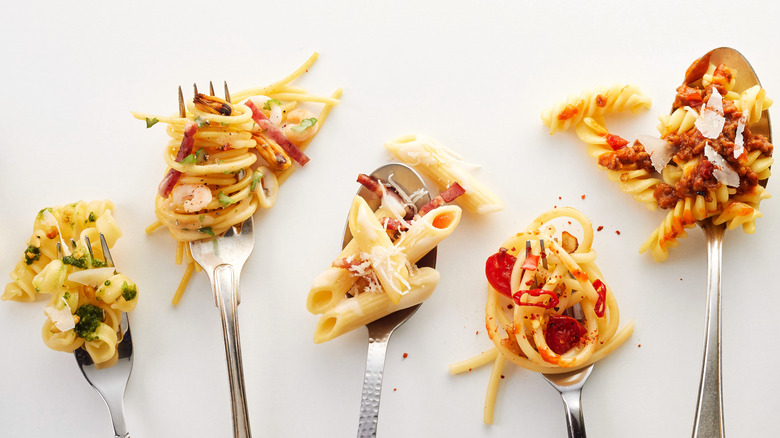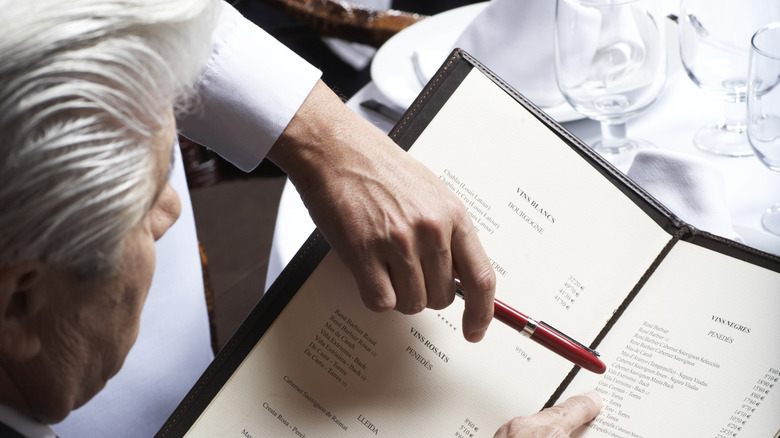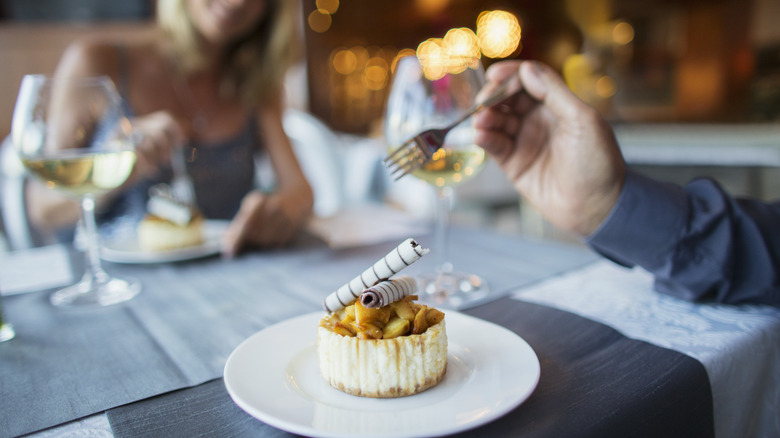What, Exactly, Is A Tasting Menu?
Going out for a gourmet dinner is always exciting, but sometimes choosing what to eat can be intimidating. When entrées are priced at a small fortune at upscale restaurants, you don't want to make a mistake and order something you'll regret. That's where the beauty of the tasting menu comes in: Tasting menus are typically offered by high-end restaurants that understand diners want to try many dishes the head chef has to offer rather than one or two items. But how does this differ from other small-portion dining styles?
Tasting menus can be considered a hybrid of tapas and a prix fixe menu. Tapas usually refers to small plates of bite-sized snacks intended to be shared but are ordered from a full tapas menu where you select as many or few dishes as you like. To compare, prix fixe menus are served in smaller portions for the individual diner, usually contain three to four courses, and allow guests to choose from set options for each course. Similarly to prix fixe menus, tasting menus have a slate of pre-selected food options but usually contain more courses — sometimes between six and 12. Unlike the prix fixe menu, tasting menus don't always allow guests to make choices or substitutions. Because of this, tasting menus are an excellent choice for guests who want to witness a chef's culinary skills and creativity, which gets highlighted by the different course options and overall experience.
Can you customize a tasting menu?
Tasting menus offer a little bit of a lot for diners and usually include courses ranging from appetizers, salads, soups, portions of pasta, entrées, and desserts, depending on the restaurant and its cuisine style. One thing that can deter diners from tasting menus is the concern they won't like everything on offer. Can you pick and choose between dishes? Most suggest you avoid this when at all possible. Tasting menus are carefully curated so each crumb, drop, and sprinkle has been precisely measured and placed onto each plate. Chefs design each course to be eaten in a specific way for maximum flavor, so asking for substitutions isn't a great look unless necessary.
Restaurants are happy to provide accommodations for those with food allergies or intolerances, especially if diners make them aware of any dietary needs when making the reservation. That said, if you don't like one or more of the ingredients used, it's best not to make that the chef's problem. You can always try to ask for a substitution or an ingredient to be withheld but don't be surprised if the restaurant denies your request. If you find yourself wanting to pass on multiple items on a tasting menu, skip it and split a few entrées with your dinner party instead. Servers are usually happy to accommodate this and might even portion the dishes separately in the kitchen first.
What to consider before you order a tasting menu
One of the things guests might find puzzling about tasting menus is that they often require the entire table to participate. This can feel strict and senseless, but it's for good reasons. When enjoying a tasting menu with many courses, if your dining partners only get a salad and a single entrée, it can be difficult for the kitchen to time the meal properly. For example, when you're on your third course, the non-tasting menu diners might still be eating Caesar salads. Beyond that, servers will usually come by to explain each tasting menu dish and suggest a possible wine pairing while everyone else stares awkwardly unless they're participating. Remember that tasting menus are an experience, which is another reason some restaurants require the whole table to participate. So, if you're keen to try the tasting menu, invite other like-minded foodies to dinner.
These unspoken dining etiquette rules can make the concept of a tasting menu feel overwhelming, but it's easily one of the best ways to experience a head chef's skill and range. Be sure to be open to new ingredients and flavor combos that you might not have considered before, and know that it is completely fine to ask questions as you go along. And keep in mind that even if a dish isn't your favorite, the portions are wonderfully small, so you don't have to feel guilty about food waste.


